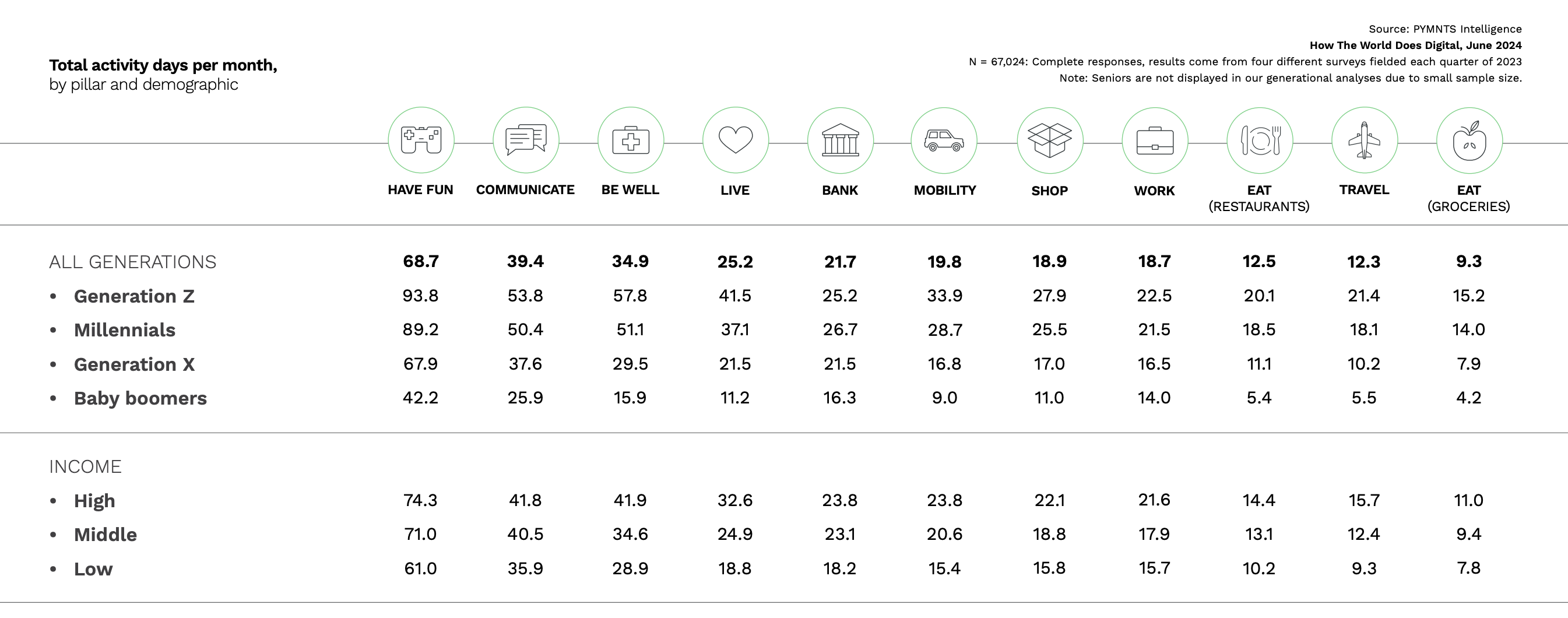Gen Z and Millennial Consumers Engage Digitally With Restaurants Most Days

For Generation Z and millennial consumers, interacting digitally with restaurants has become the norm rather than the exception.
By the Numbers
This year’s installment of PYMNTS Intelligence’s “How the World Does Digital” report harnesses insights from a study, comprising more than 67,000 consumers across 11 countries that make up approximately half of the world’s gross domestic product, to understand how they engage digitally throughout their lives.

The results revealed that when it comes to restaurants, young consumers are engaging more often than not. Consumers overall averaged 12.5 total activity days in this sector per month — that is, they engaged with restaurants online 12.5 days out of every roughly 30 days. Among Gen Z, however, that figure rose to 20.1, and millennials, too, engaged most days, at 18.5.
In contrast, Generation X averaged only 11.1 days, and baby boomers just 5.4.
A Deeper Dive
Consumers’ digital engagement with restaurants varies not only depending on their age but also their incomes and where they live. The same “How the World Does Digital” study revealed that high-income consumers average 14.4 activity days to low-income consumers’ 10.2 activity days.
Additionally, those who live in cities engage more digitally. Research from the PYMNTS Intelligence study “ConnectedEconomy™ Monthly Report: The Urban-Rural Health Divide Edition,” which drew from a survey of nearly 2,500 U.S. consumers, revealed that 75% of urban consumers engage with restaurants digitally, as do 46% of suburban residents and 28% of those who live in rural areas.
Digital technologies can also increase spending for restaurants. Findings from the PYMNTS Intelligence report “Tracking the Digital Payments Takeover: Can New Use Cases Drive Consumer Use of Digital Wallets?” revealed that when using digital wallets, consumers spend an average of 33% more on restaurant purchases than when not using the payment method.